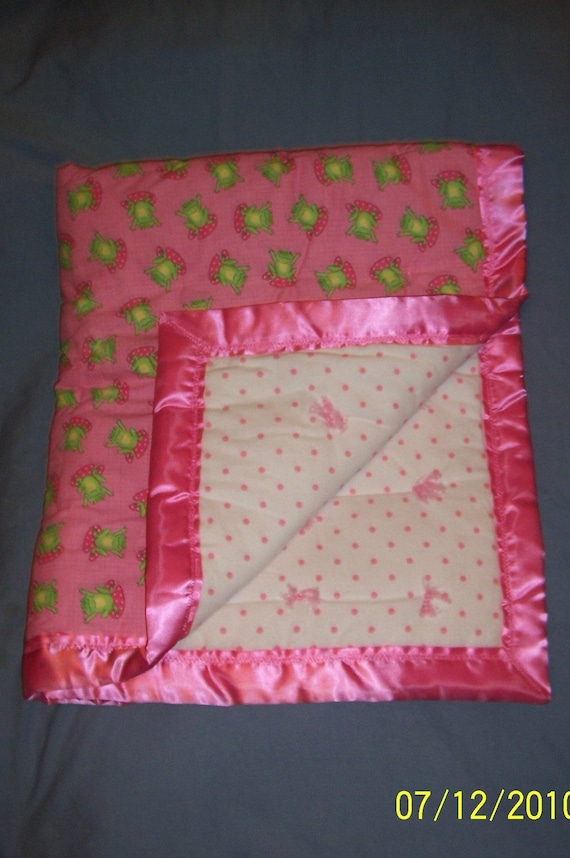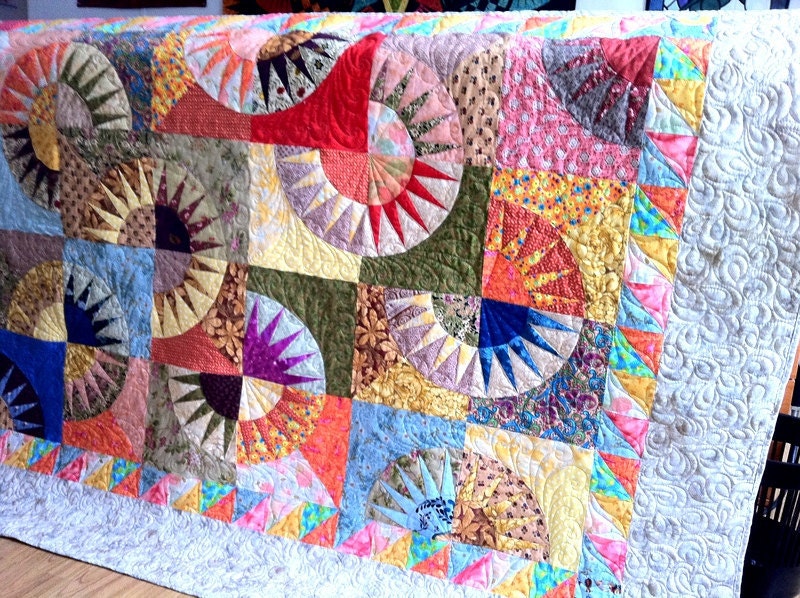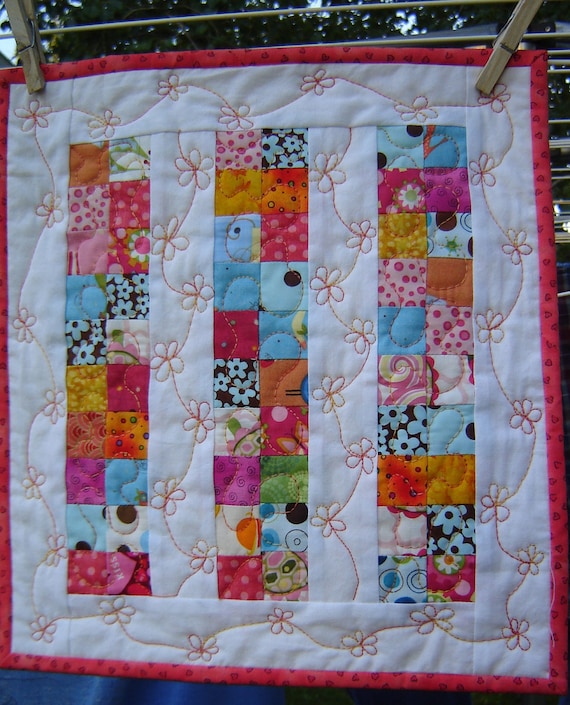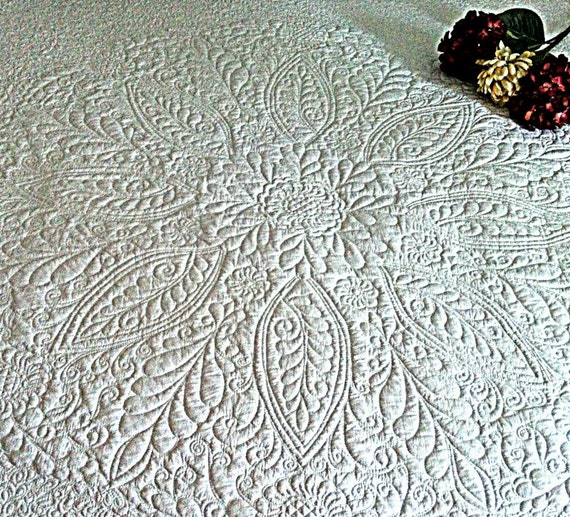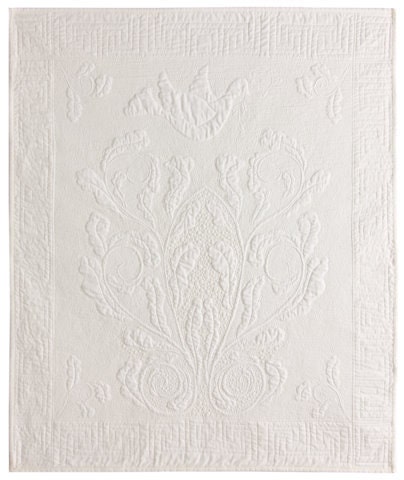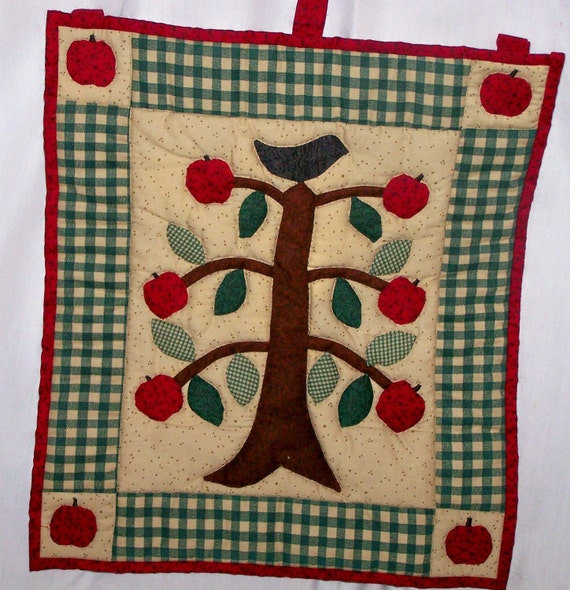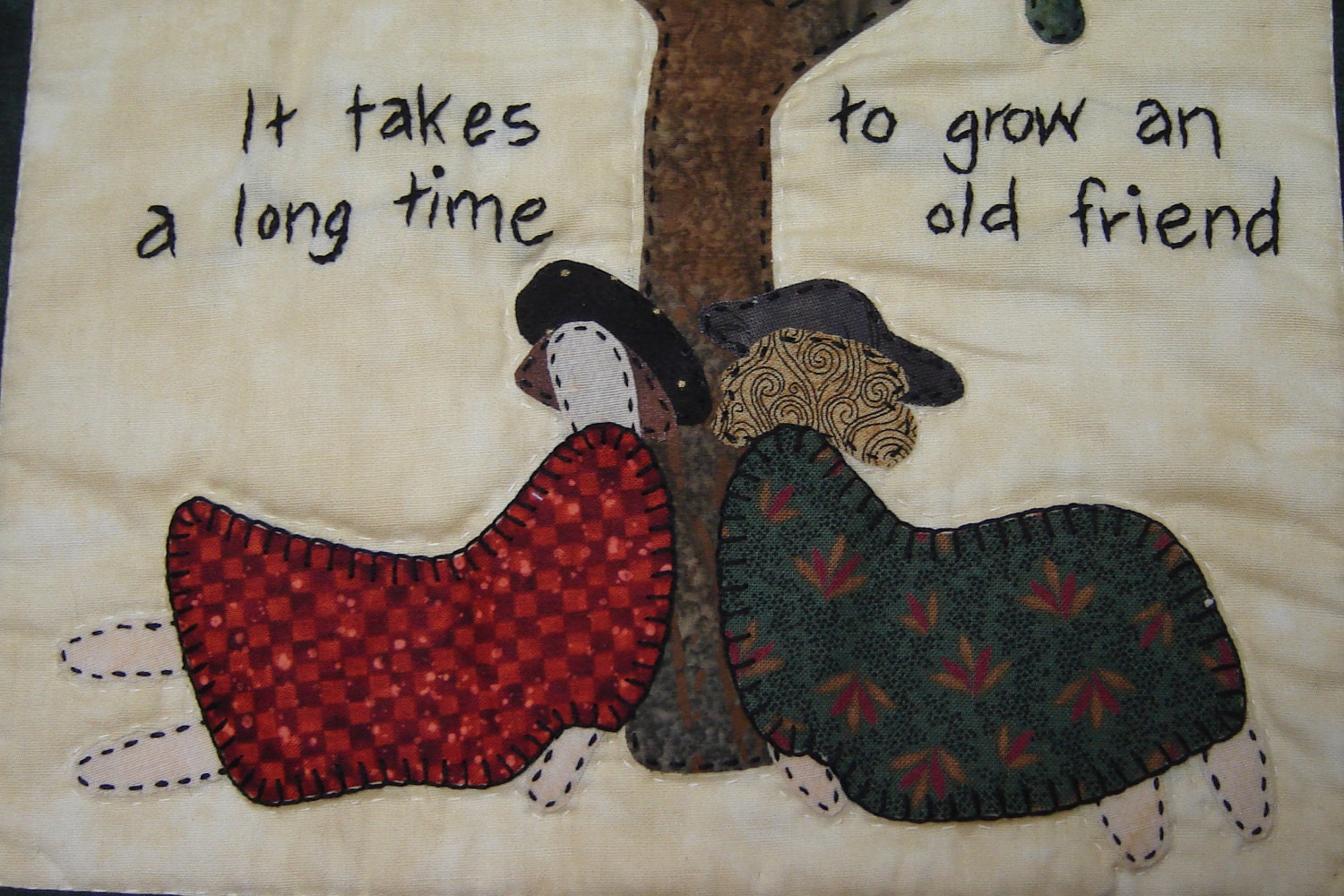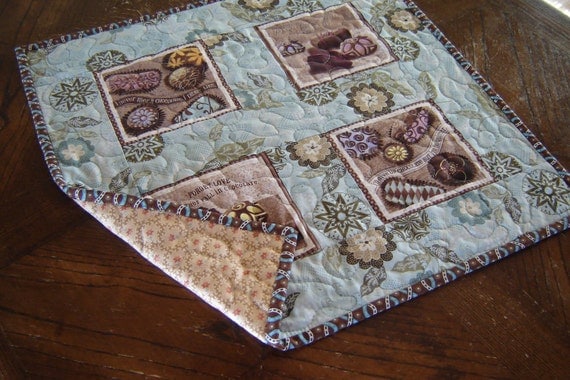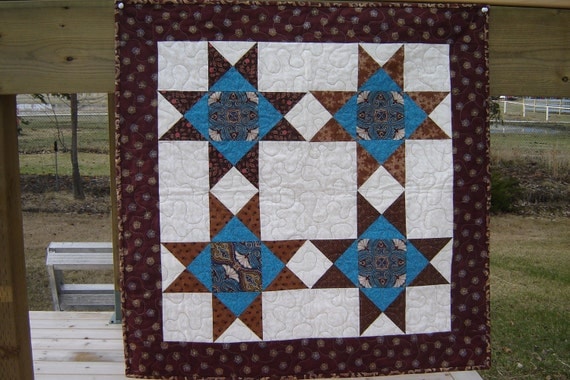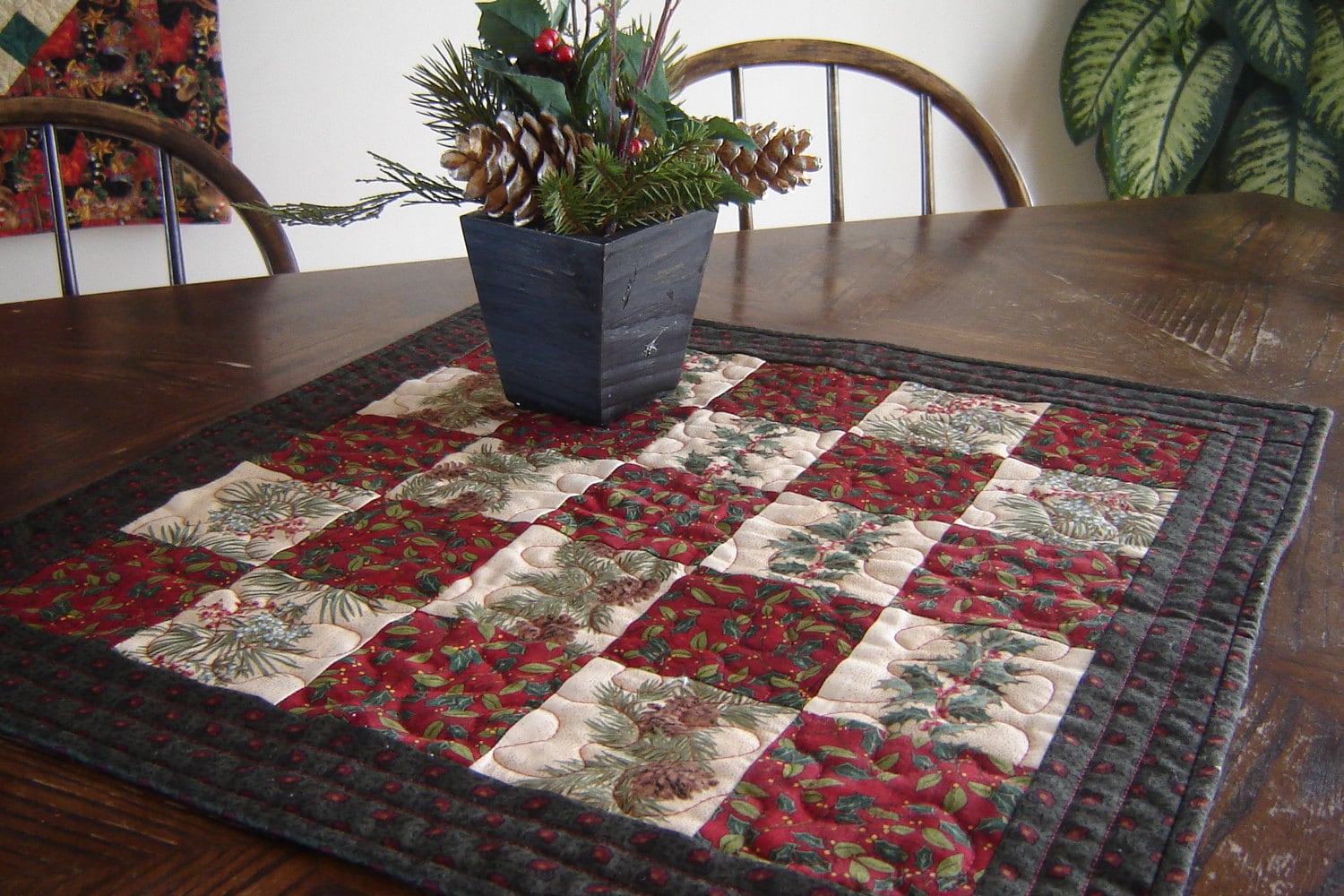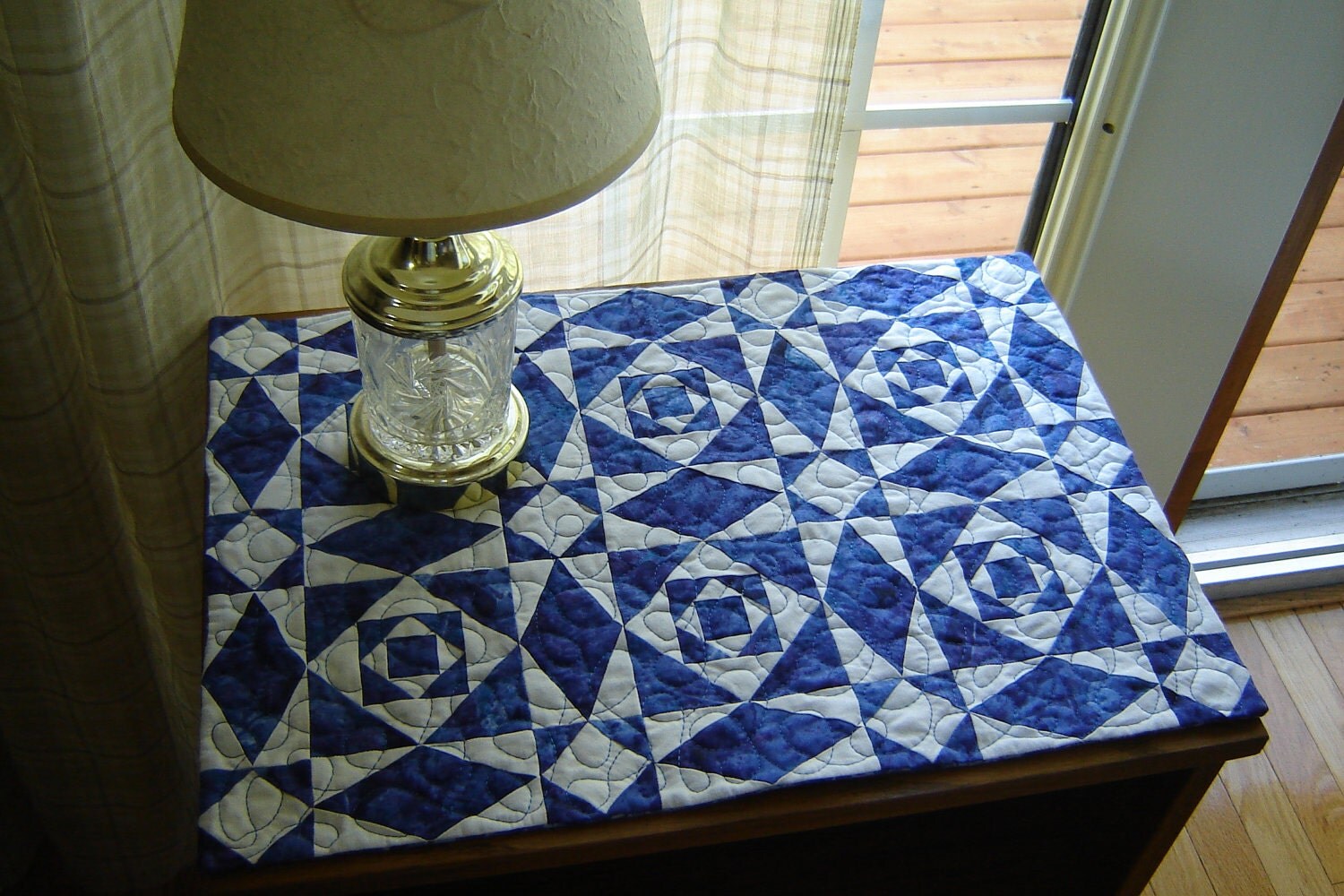What separates a quilt from a blanket is the process of quilting. Quilts are generally 3 layers: a top layer, a layer of batting (or wadding), and a backing. Quilting is the process that holds the layers together. Some quilts will only have two layers if the quilter decides to combine the backing & batting by a single layer of fleece or other material.
Quilters have for years done most of their quilting by hand. Utility quilts and simple primitive quilts were and are often just tied. Spaced evenly or randomly over the quilt, tying is simply done by taking a single stitch through all the layers of a quilt, bringing the ends up to one side and then tying with a
square knot or a
surgeon's knot.
Hand-quilting is an art form in itself and many traditional quilters believe that this is the only way a quilt should be finished. It is a time-consuming task and expect to pay for that time! Many modern quilters are returning to the hand-quilting roots of the past by using crochet cotton or embroidery thread to embellish their modern linear designs. You will see so called "hand-quilted" quilts in box stores and if you look closely at the stitching, the stitches will be around 4-8 stitches per inch and may or may not be even throughout the entire quilt. A good hand quilter will stitch 8-14 stitches per inch (or better) and the stitches will be even through the whole quilt as well as from the front to the back. If you are buying a quilt on-line, be sure to ask for a detail photograph of any hand-quilting, preferably with a ruler in the picture so you can see the quality and fineness of the stitching. That, along with the complexity of the quilting design will determine the value of a hand-quilted quilt.
Machine quilting can either be done on a regular sewing machine (sometimes called a "domestic" machine) or on some type of a long-arm quilting machine. On a regular domestic machine, a quilt will be quilted with straight lines, using a walking foot, or free-motion, using a free-motion or darning foot. A walking foot will ensure that all layers of a quilt are fed through the sewing machine at an even rate and you will be able to see this on the finished quilt as all quilting seams will be straight, with no puckers at the intersections of quilting lines.
Free-motion quilting may follow a pattern or may be all-over meandering patterns. Again, the sign of good free-motion quilting is no puckers in the front or back of the quilt. Smaller quilts are easily handled within the confines of a regular domestic machine and larger quilts are considerably more difficult to maneuver because of their bulk. For any machine quilting, be it straight stitching or free-motion stitching, good quilting involves even, regular stitches and no puckers in the quilt layers.
Long-arm quilting machines are becoming more commonplace as time goes on. Many quilters enjoy the design and piecing together of quilts, but for a variety of reasons will have their quilt tops quilted on a long-arm machine. These machines look like a cross between the large quilting frames of the past and a sewing machine with a deep throat. Quilts with an all-over pattern done via computer aided sewing are the least time intensive, followed by computer aided custom quilting. This is done by chosing a computerized design and limiting it to certain areas on a quilt, requiring set-up for each area before stitching.
Custom long-arm quilting can also be done with an all-over pattern or it can be done custom. This type of long-arm quilting is done with the operator actually guiding the machine in the patterns used to quilt the layers together, resulting in some beautiful, artistic quilts.
Next time - Quilt Finishes
I hope you are enjoying this series! Please add a comment if I've missed anything or if you're liking this little blog mini-series!
--Ann












